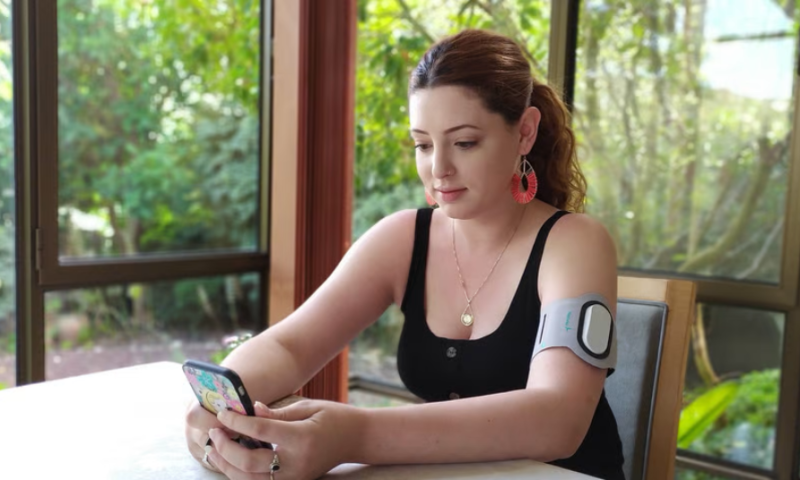Less than two years after the FDA cleared Theranica Bio-Electronics’ Nerivio neuromodulation armband as an acute migraine treatment in 2019, the company successfully lobbied the agency to expand its indication from adults only to all patients aged 12 and older with episodic or chronic migraine.
Like clockwork, with almost two more years having passed since the last update, Theranica is once again asking the FDA to expand the device’s approved usage. Its latest submission would position the wearable as a preventive migraine therapy in addition to its current use as an acute, on-demand treatment—making it a “much more important and impactful therapy,” according to CEO Alon Ironi.
“That means, first of all, less dependency on pharmacological agents. It also means less burden, because if you only have one therapy that you have to adhere to, it’s fewer things to worry about,” Ironi said in an interview. “If you manage to get both significant reduction in your migraine episodes as well as to abort whatever episodes you do experience with the same therapy, that makes your life easier.”
The regulatory application is supported by promising results from a new study released Tuesday showing that regular use of the Nerivio system outperformed a placebo treatment in reducing the number of migraine days users experienced.
The study included about 250 people, including equal numbers of those with chronic and episodic migraine—a “very unique” approach compared to other migraine therapy studies, which typically focus on just one group at a time, Ironi noted. After undergoing a four-week observation period using their normal treatment regimens to establish a baseline, participants were assigned to use either the Nerivio device or a placebo every other day for another eight weeks—during which they could continue to use their existing therapies as usual.
By the end of the study period, the Nerivio users experienced an average reduction of four migraine days per month, compared to 1.3 fewer migraine days in the placebo group. Chronic migraine patients benefited slightly more from the neuromodulation treatment than those with episodic cases: The groups registered reductions of 4.7 days and 3.2 days, respectively.
Though the reduction was slightly less dramatic for the 40% of participants who were already using some sort of migraine treatment—including prescribed oral medications, CGRP monoclonal antibody injections and Botox injections—it was still present. Adding Nerivio to their regimens cut monthly migraine days by an average of 3.5 days, compared to 1.5 fewer days for their placebo counterparts. Those results were an unexpected boon for the technology, according to Ironi, who said, “We were actually surprised that it worked so well even in patients who used other medications.”
Ironi said Theranica has already submitted the trial results to the FDA for consideration through the 510(k) pathway, after the device was initially cleared through a de novo request. The company is expecting the indication expansion to arrive within “a matter of months.”
Beyond this expansion effort, Theranica is planning additional extensions of its work along “several axes,” Ironi said. For one, it’ll continue to study the use of Nerivio as a migraine treatment, with one currently ongoing study focusing on pregnant participants and another in the works that will follow users for a longer period of time after the device secures its preventive FDA nod.
Meanwhile, the company is also working with “a couple of international pharma companies” to bring its technology to other countries outside of the U.S.—where it initially focused “because the U.S. market is about 50% of the world migraine market in terms of dollars, and there’s only one regulatory body, the FDA, which ‘controls’ a population of 330 million people,” per Ironi.
Finally, Theranica is studying the possibility of expanding Nerivio beyond migraine, starting with fibromyalgia.
“Fibromyalgia is not as prevalent as migraine, but it’s disabling and debilitating almost in the same way as migraine, and our impression from talking to physicians and patients is that the unmet need for good therapies might be even larger than in migraine,” Ironi said.
“Based on the mechanism of action of Nerivio and the technology we’re using, we think that there’s a very good basis to believe that this technology—maybe with some modifications that we’re implementing—is going to be quite effective for fibromyalgia,” he added.

